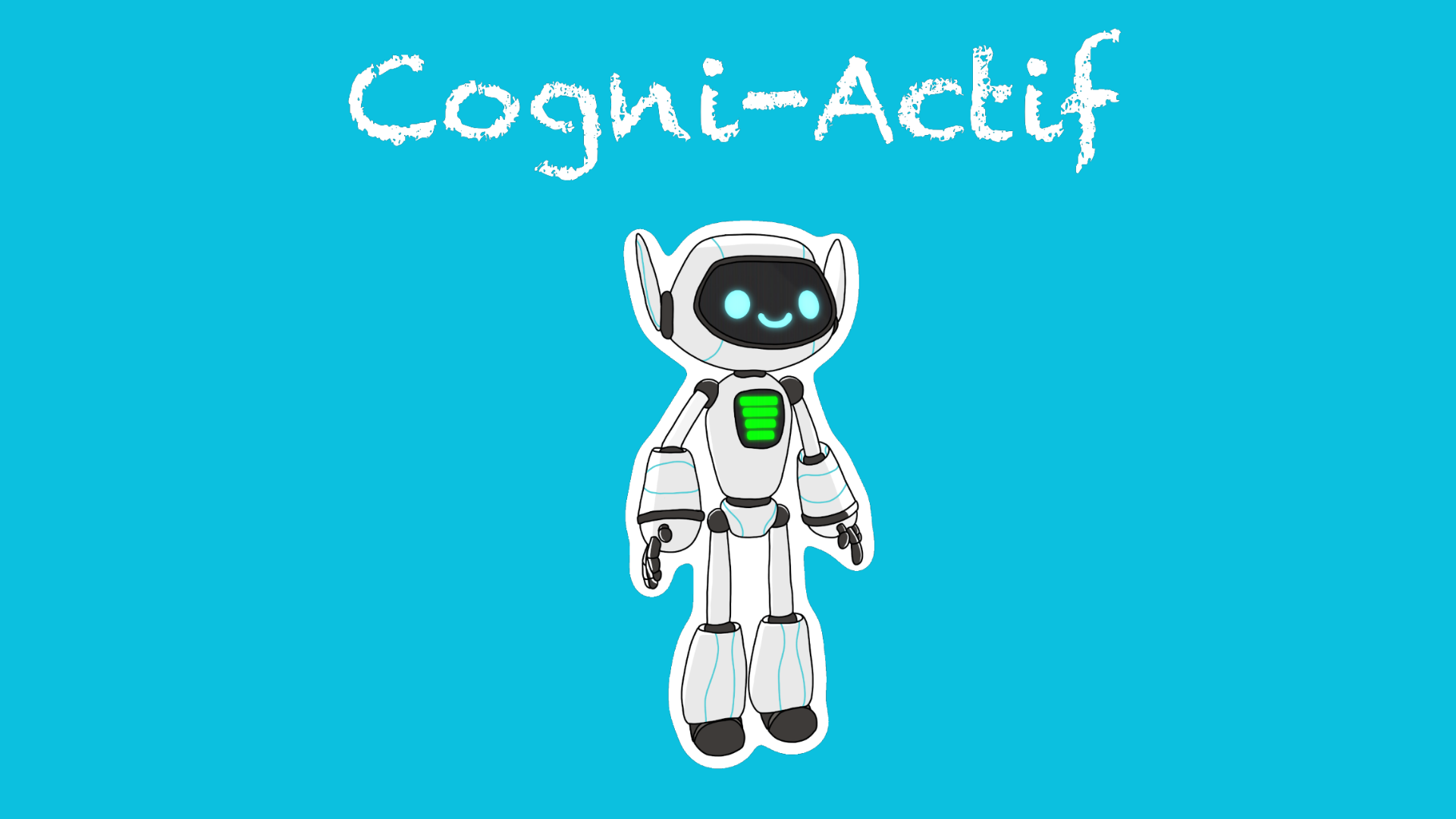Cogni-Actif is a game aimed at allowing elementary school students to engage in daily physical activity while solving exercises in subjects such as mathematics or French, for example.
To do this, students follow the movements performed by a robot on the screen and must do enough physical activities to recharge its battery.
I participated in the development and programming of this game. Here are the main tasks I worked on during the project:
Integration of Character Animations
I integrated animations of the main character and the robot into the game.
These animations were created by a 3D artist.
We had to work together to ensure the animations were well integrated into the game.
Integration and Automation of Educational Content
In "Cogni-Actif," the educational aspect is of paramount importance.
My role was to ensure that the educational content, whether it's mathematics or French questions, was effectively integrated into the game.
I also automated the import of this content into the game.
Implementation of Physical Activity
To create an engaging and educational experience, I set up the physical activity system.
This includes managing precise timing to alternate between high and low-intensity movements, synchronizing character animations with these activities.
During high-intensity movements, students also have to answer math or French questions.
I implemented the question and answer system during these phases. This component allows students to stay active while learning, contributing to an innovative learning experience.
Performance Optimization
A crucial aspect of developing "Cogni-Actif" was optimizing the game's performance to ensure it can run on less powerful computers, providing an accessible educational experience to a wide audience.
I was responsible for managing the lighting, evaluating the benefits of real-time lighting versus precomputed (baked) lighting to maintain a balance between visual quality and performance.
Additionally, I managed camera occlusion to optimize system resources, ensuring a smooth experience.
Implementation of Game Music and Sounds
The audio dimension plays a crucial role in player immersion, especially in an educational environment.
I took charge of implementing music and sound effects, creating a pleasant and stimulating atmosphere for students while ensuring that the sounds are suitable for the learning experience and physical activities.
The game includes multiple playlists of music and sound effects for different game phases.
Implementation of Game Settings
To customize the experience for each student, I implemented game settings, allowing teachers and students to personalize certain aspects of gameplay, such as game modes, session duration, silent mode, and more traditional settings like music and sound effect volume.
Implementation of Communication with an Azure Playfab Database to Save Student Progress
To ensure tracking of student progress, I integrated a communication system with an Azure Playfab database to monitor student progress.
At the core of this integration, I managed the creation and management of individual student profiles, storing their progress data, such as rewards they collect in the game.
This information is saved in real-time during each game session, ensuring consistent data synchronization regardless of the devices used by students, whether at school or at home, while also ensuring data security.
The goal in the near future is to provide teachers with an effective means to track and analyze student performance in the game using this data.

